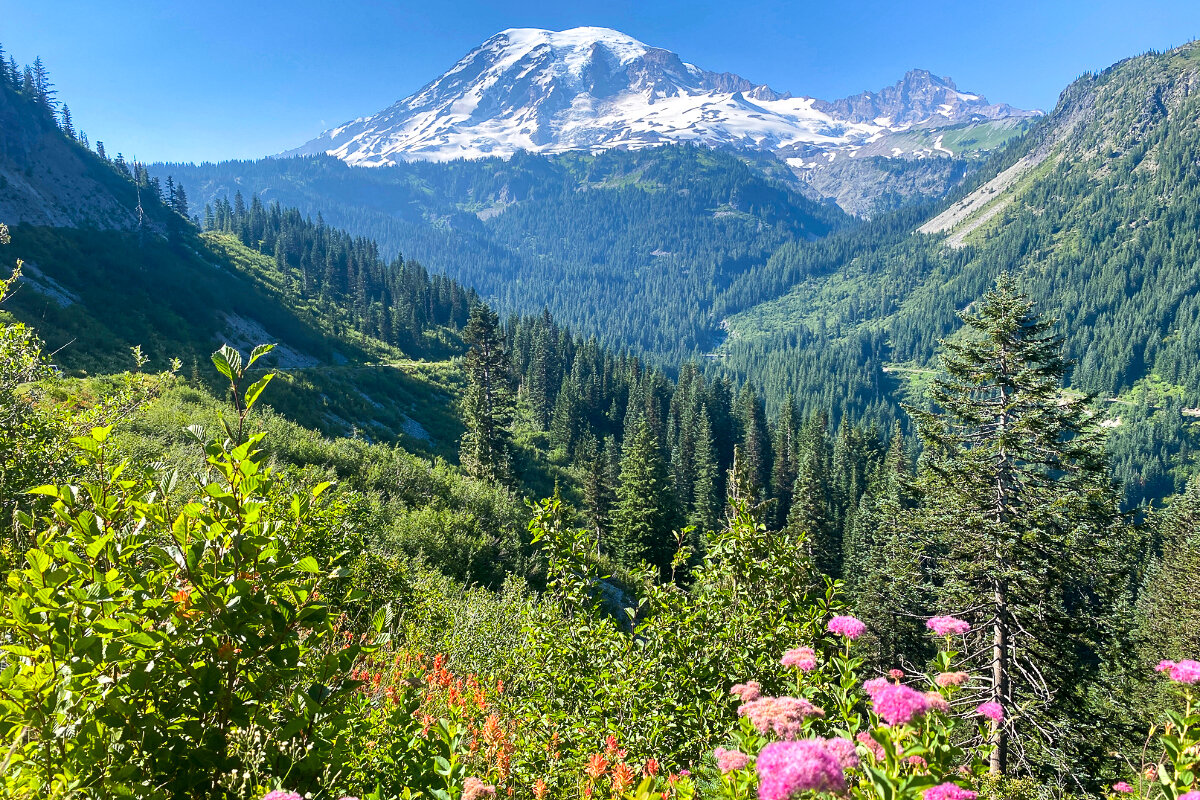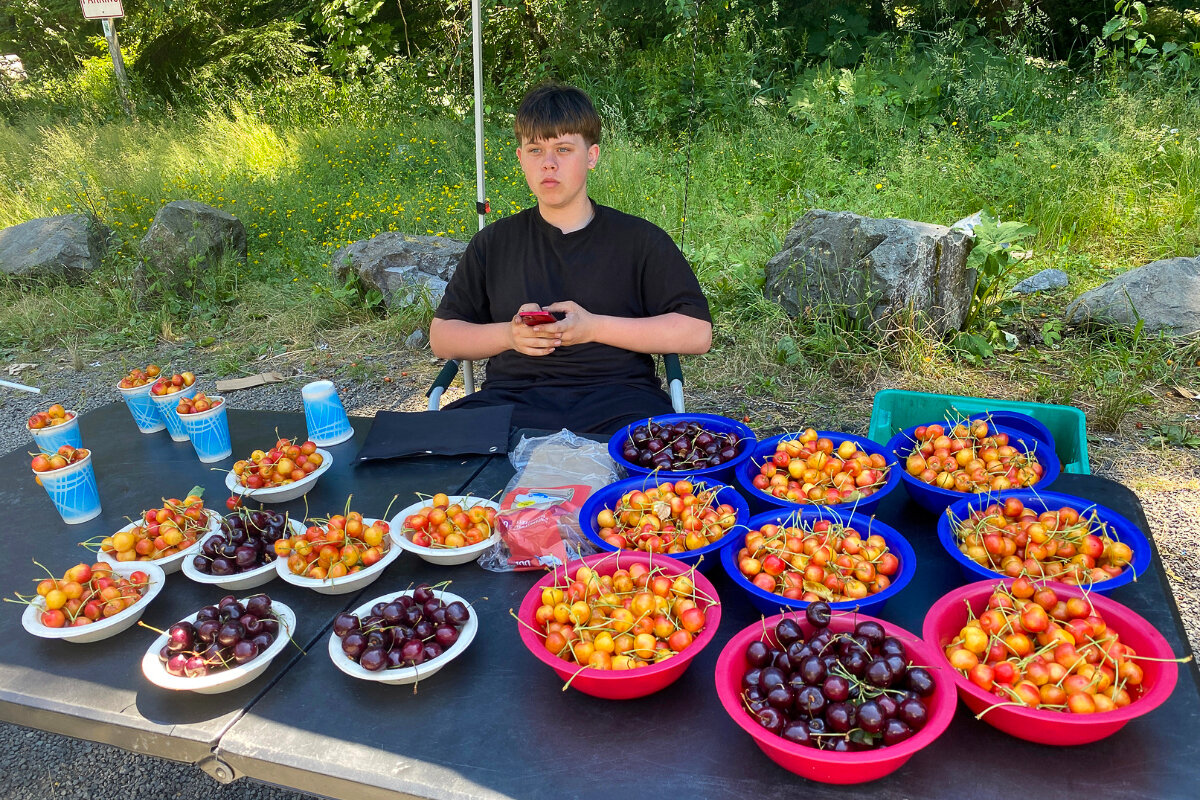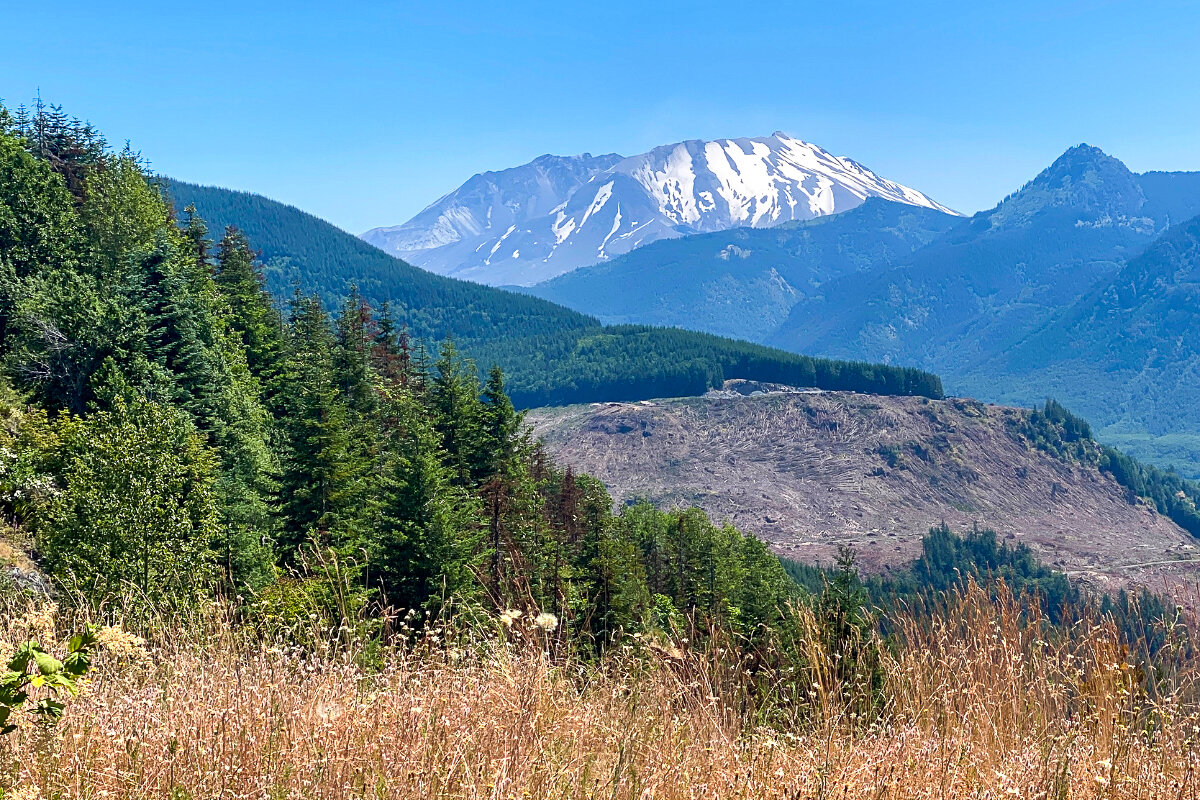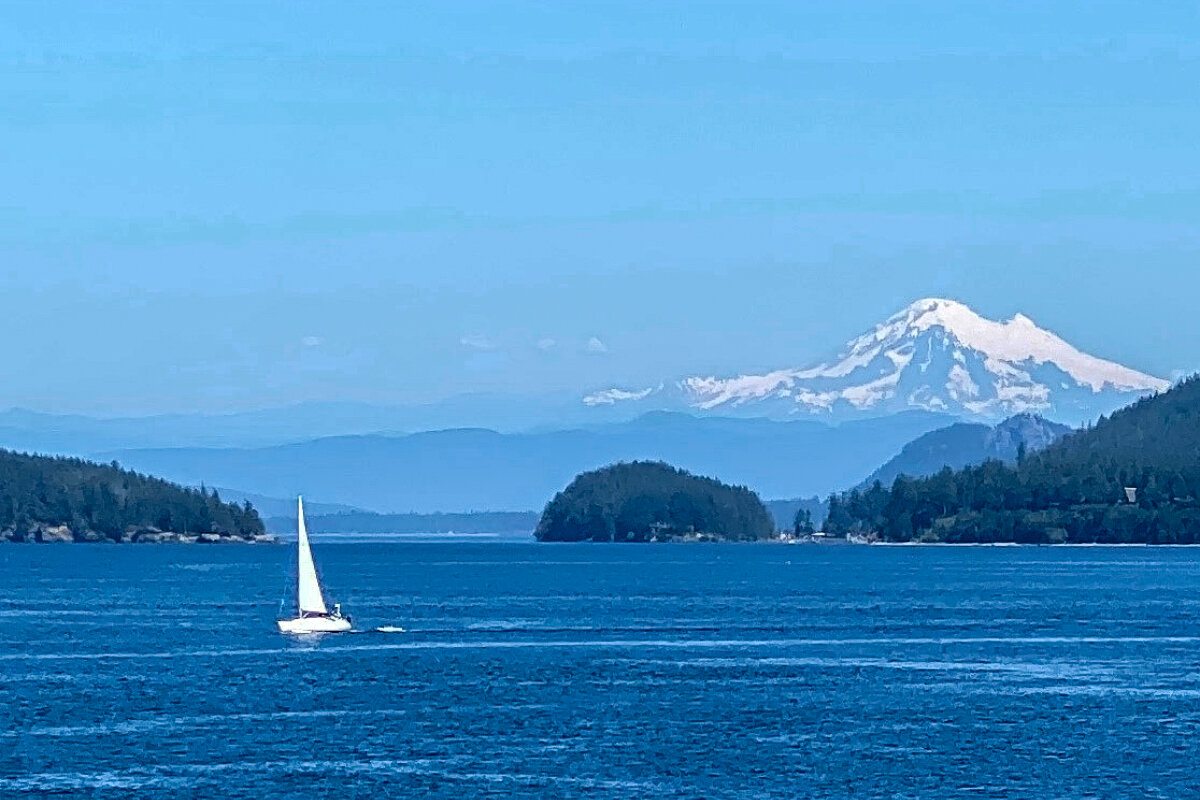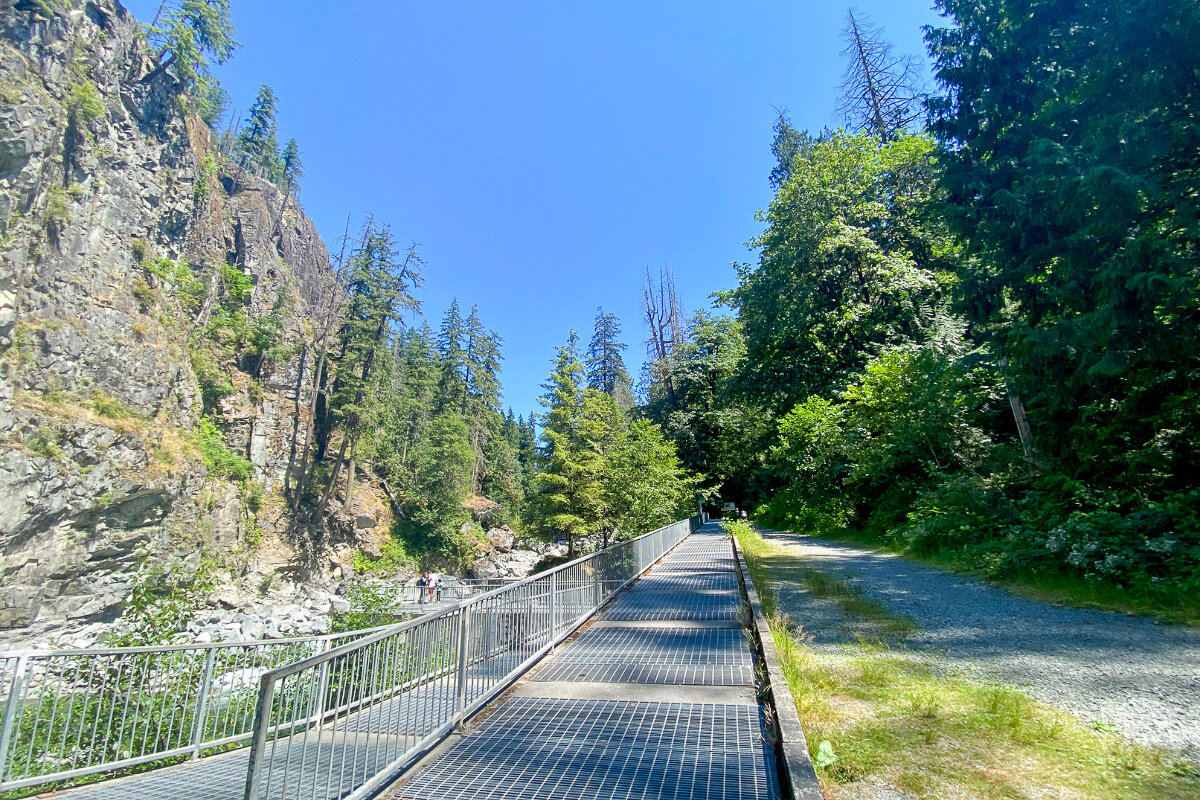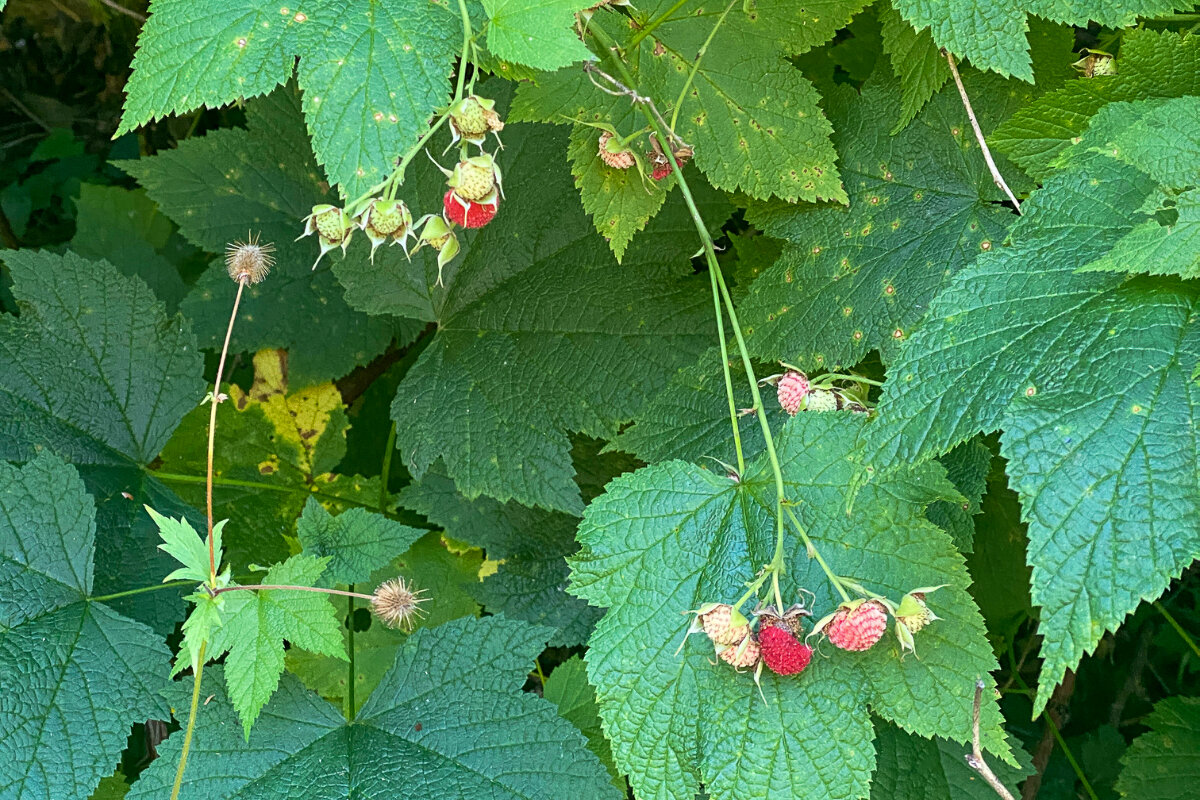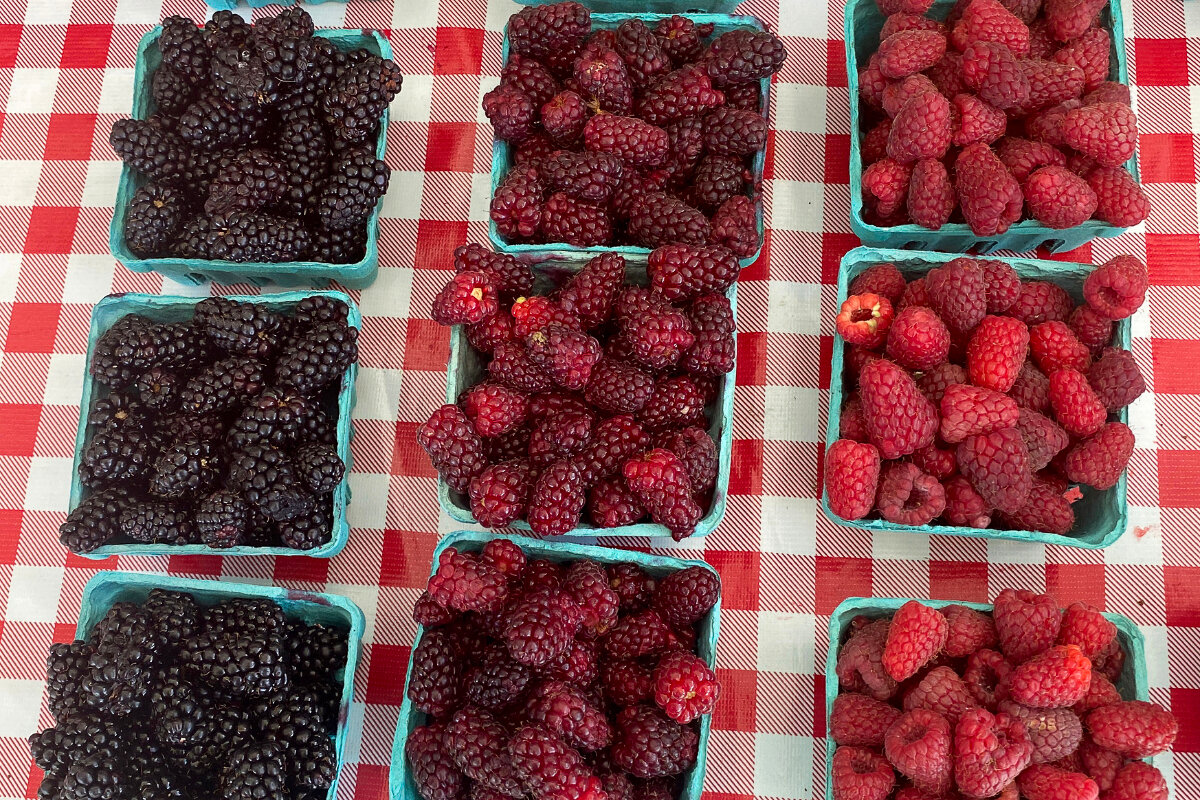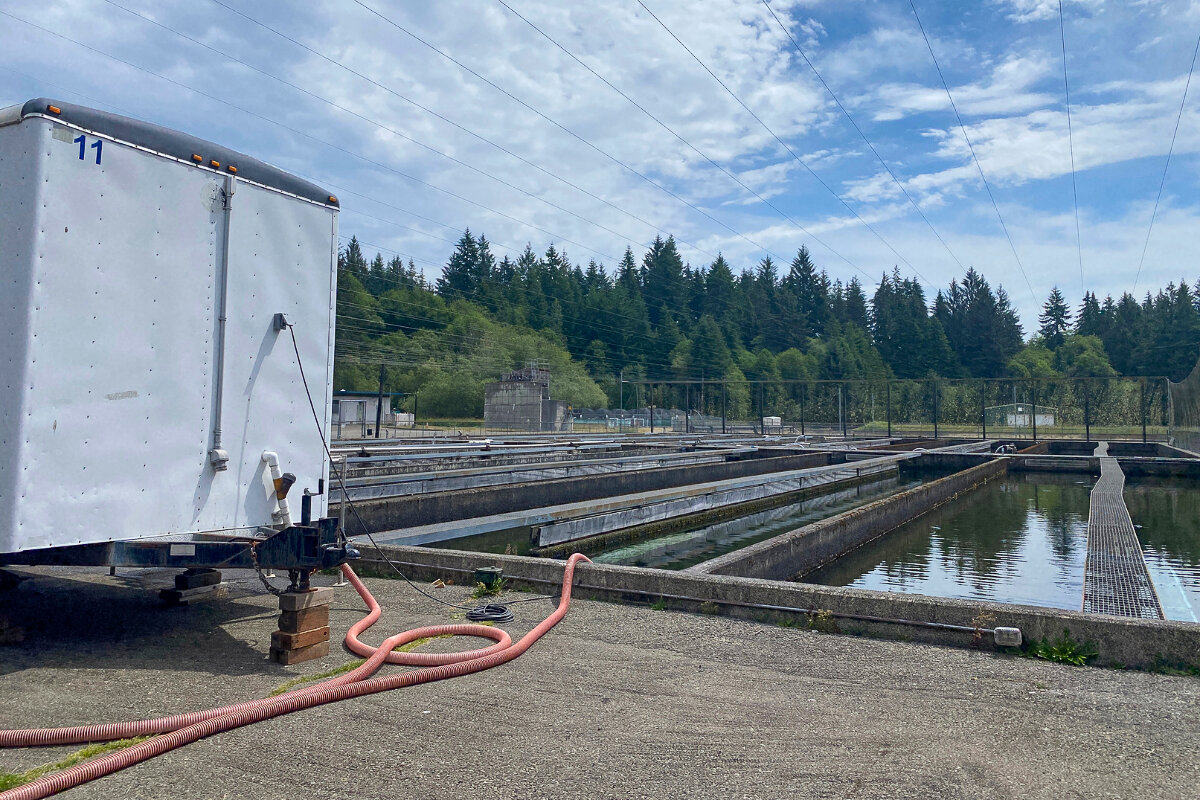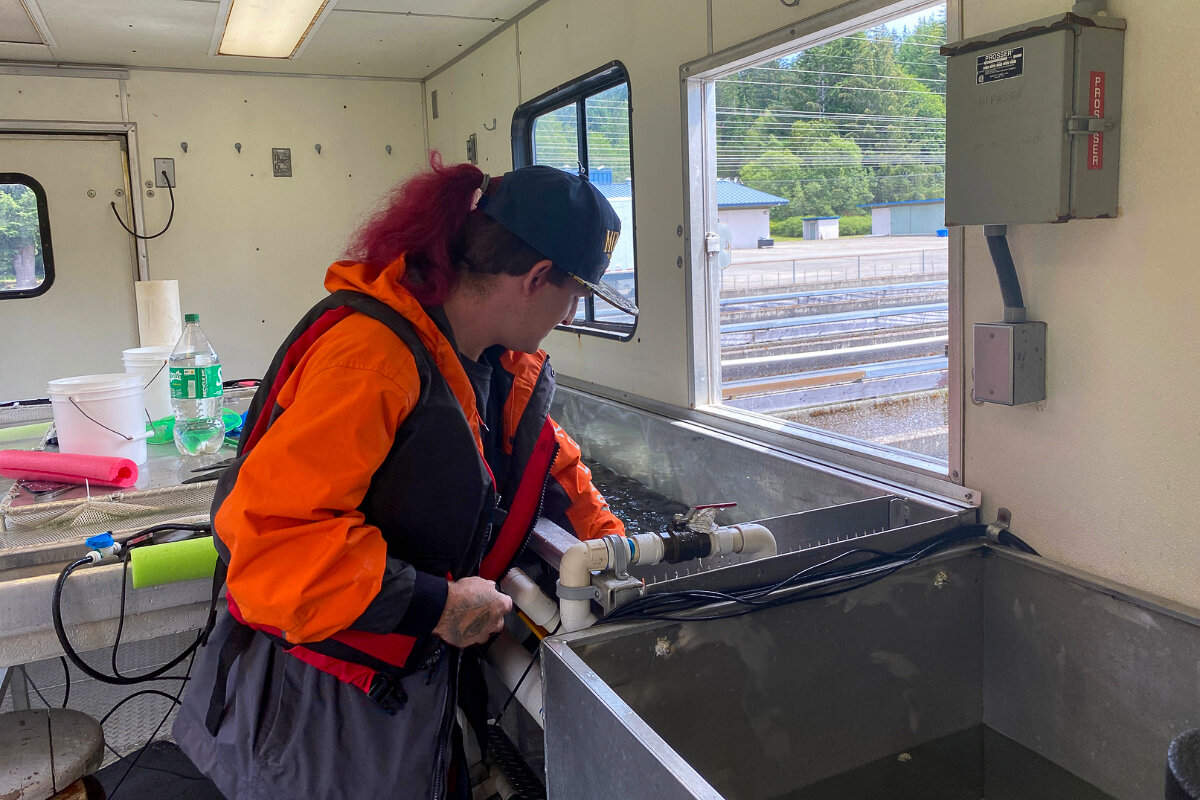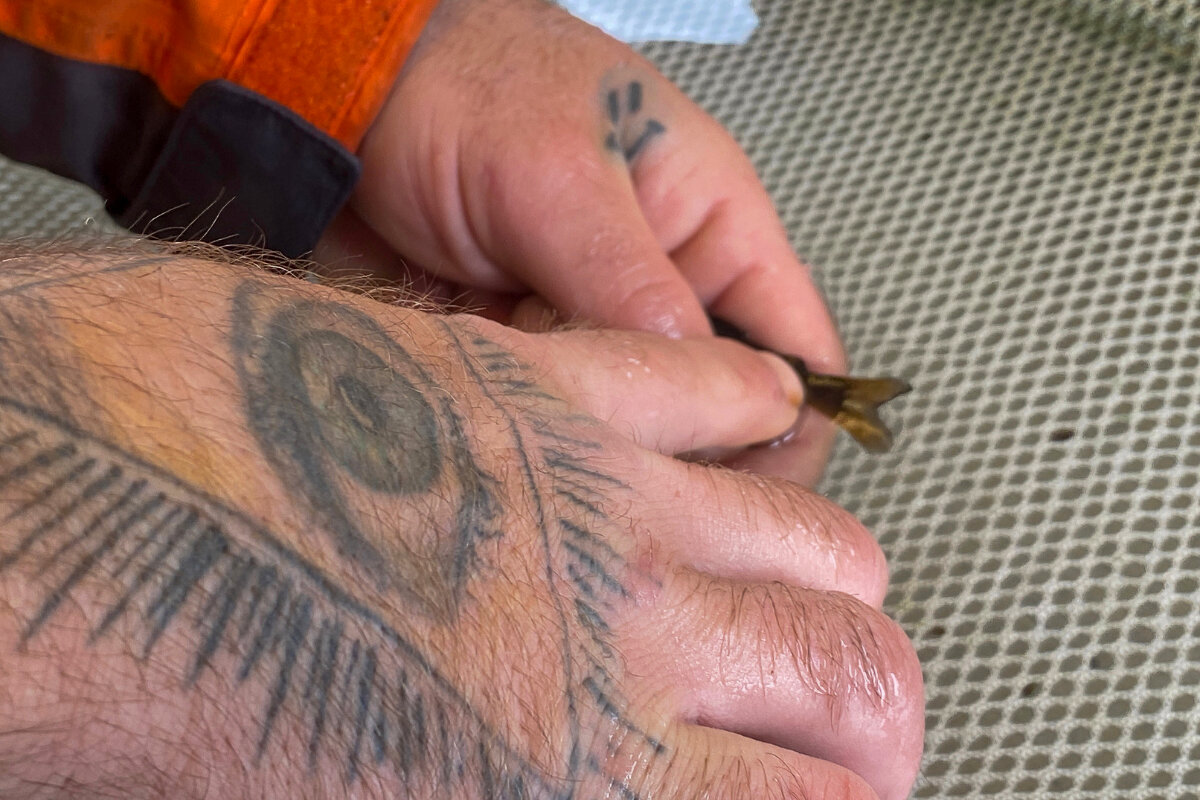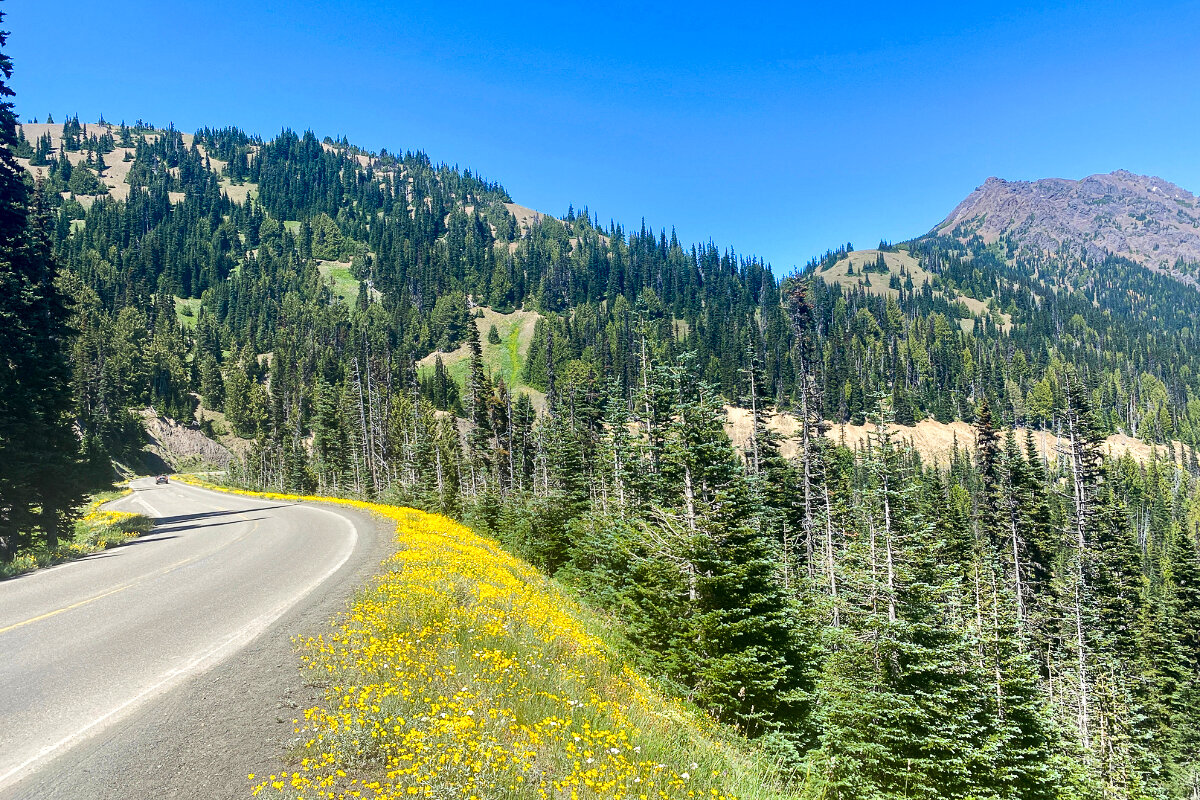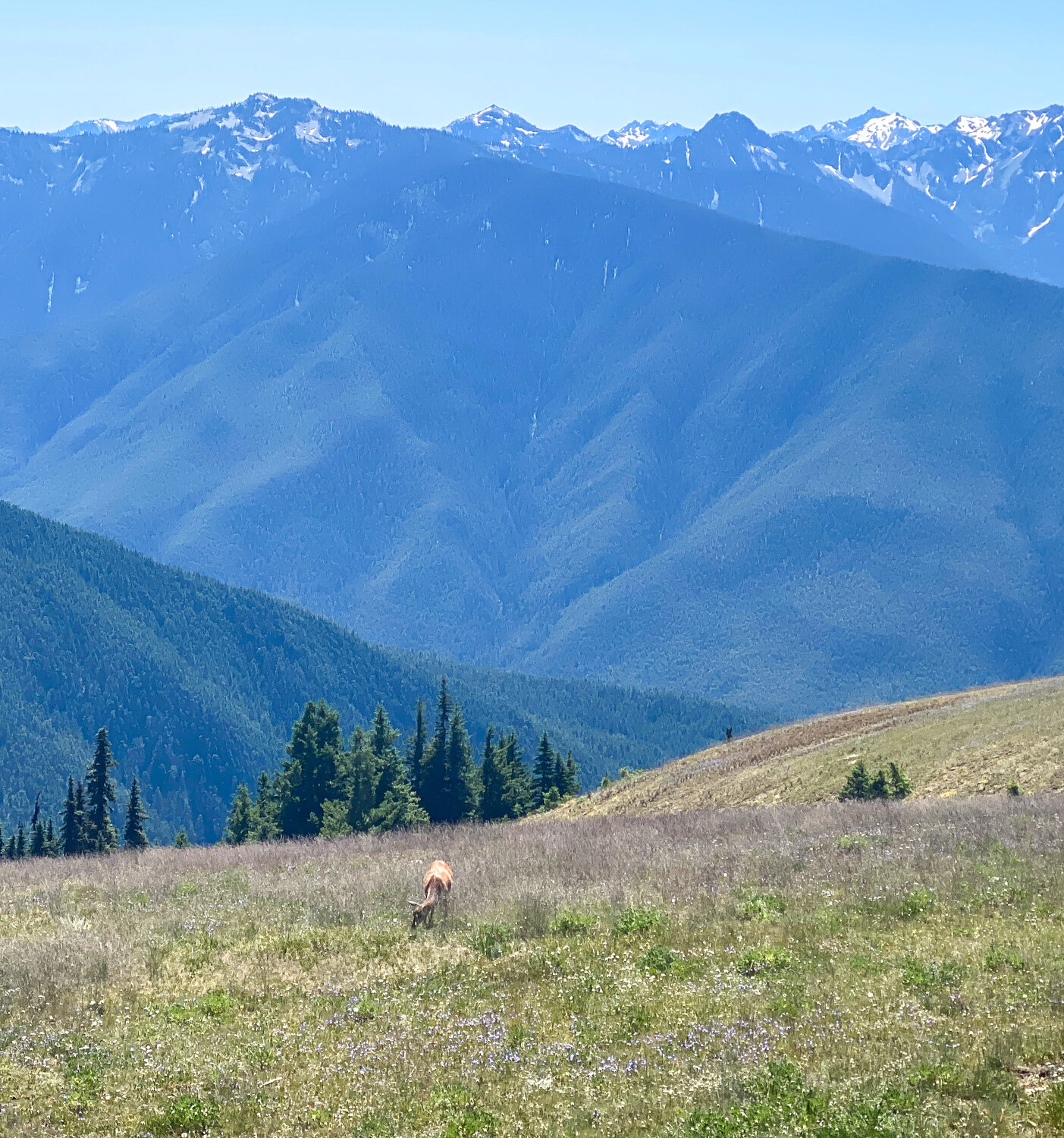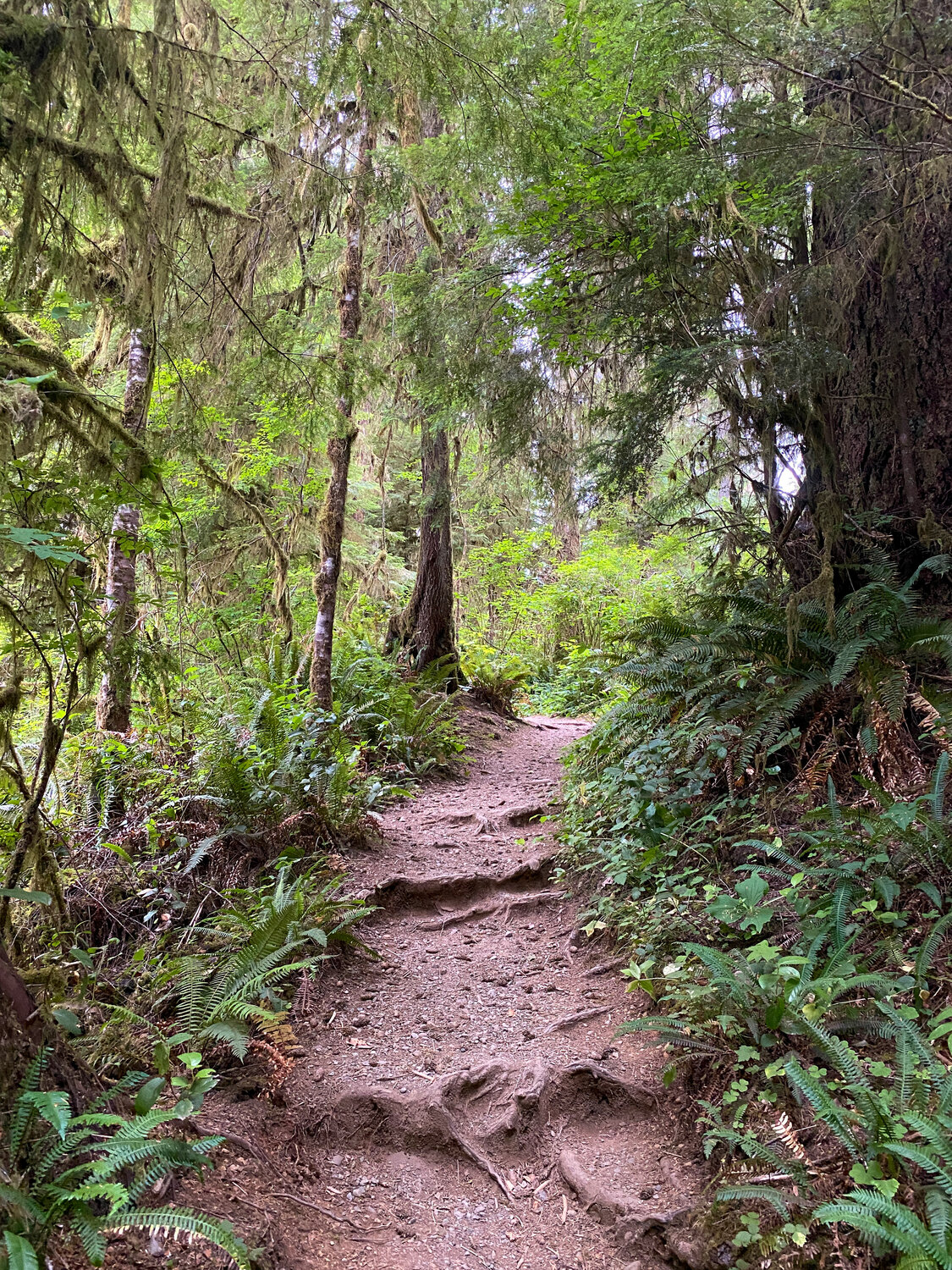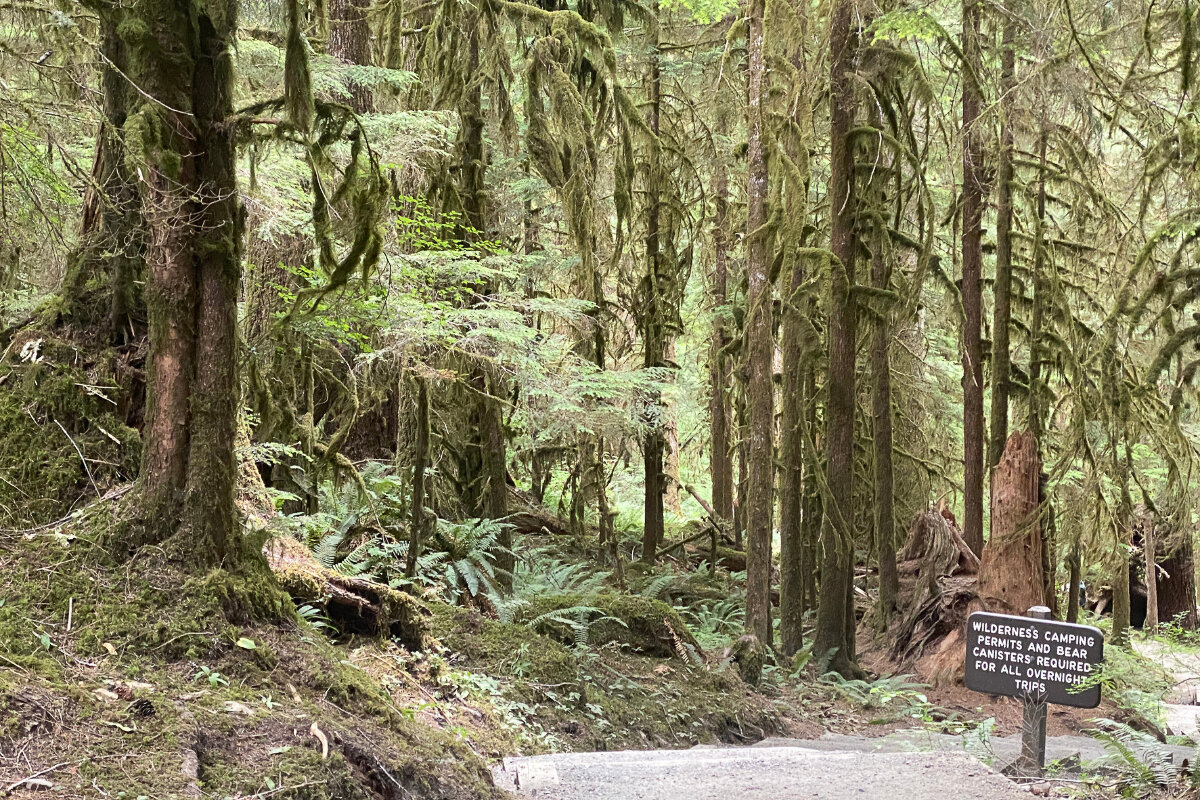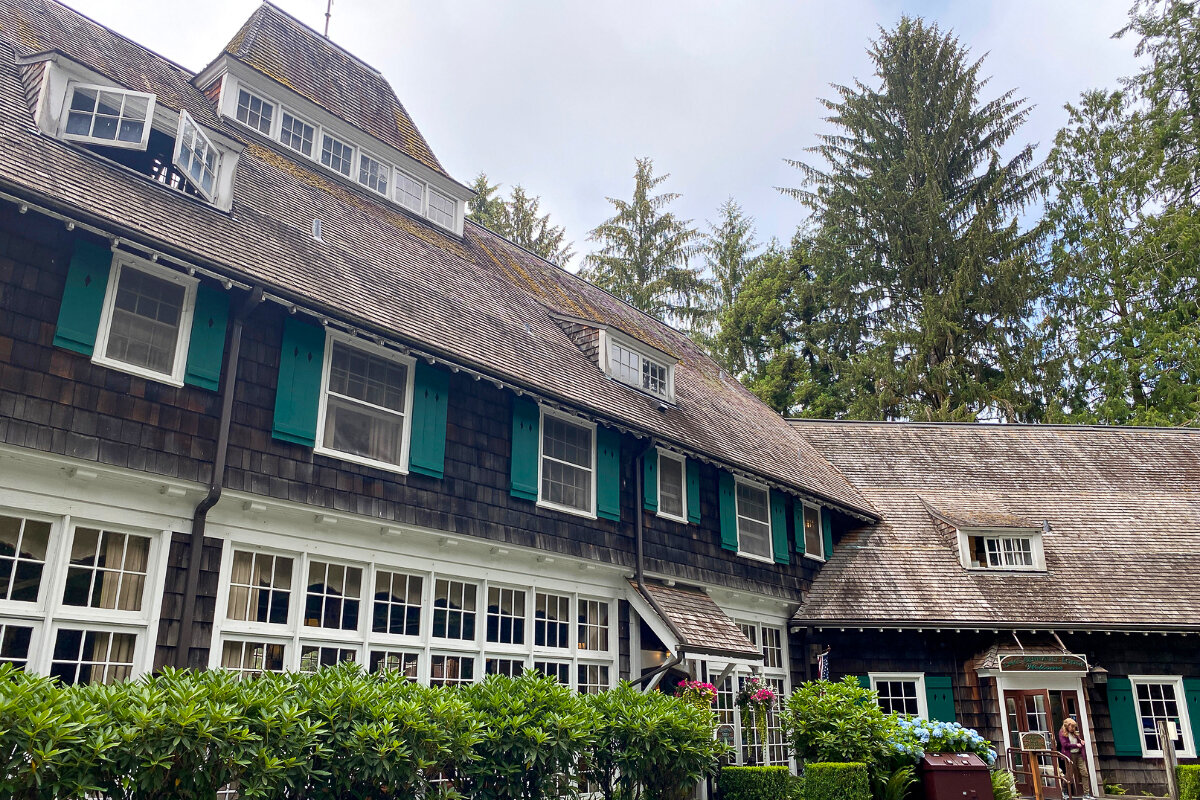Washington Mountains and Foothills
On my recent trip to Washington state, I did my best to take in the active volcanos, salmon runs and mountain vistas unique to the northwest part of the state. Along the way, I found rainforest trails, wild berries to pick, and amazing yellow Rainier cherries. Come along with me on this text and photo journey.
The active volcanos were spectacular, especially so with clear blue skies and wildflowers in bloom. Western Washington is part of the Ring of Fire, the volcanos that surround the northern Pacific Ocean on both sides. Washington has five active volcanos, and I managed to see three of these -- Mount St. Helens, Mount Baker and Mount Rainier -- but Mount Rainier was by far the most spectacular to view from the road. This volcano is visible from Seattle, but that wasn’t good enough for me. I spent two days in and around Mount Rainier National Park savoring the views from all directions. I quickly learned to avoid the crowds that gathered in the huge parking lots at the end of the roads inside the park. My best views by far were from roadside turnoffs, which no other people seemed to be stopping at and, in summer, I had a winter ski resort turned into a summer gondola experience mostly to myself. Perfect.
The foothills of Mount Rainier were even more interesting to me than the peaks. Close to the southern entrance to the national park I encountered a fellow selling yellow cherries I had never seen before, the aptly named Rainier cherries, only in season for a few weeks, and, as luck would have it, right when I was there. I chatted with the guy selling cherries, bought a $2 cup of cherries, and, on a whim, gave him a sealed package of cookies I no longer wanted. On my way back through this area the next day, I stopped for another $2 cup of cherries, and he thanked me for the cookies and gave me a big bag of cherries for free. I munched on these delicious ripe cherries all the way back to Seattle. Perfect again.
The road to the observatory at Mount St. Helens was closed from a landslide months ago and will not open again for a couple of years, I was told. But my friends and I got as high as we could and I managed a few photos, but nothing much. I only managed to view Mount Baker from a distance, while riding a ferry in Puget Sound, but that was just fine. I had completed my volcano mission.
Then I was on to salmon. On my Google map I found the Granite Falls Fish Ladder, a couple of hours or so off my course driving from Seattle to Anacortes, but why not? It was a great idea. The fish ladder was constructed in the 1950s, the largest at the time, and still operates. Unfortunately the actual ladder and the fish are under the grated walkway, not really visible, but the falls themselves and the hike in and out was memorable for the wild thimbleberries I picked along the trail. Further down the road, at a fruit stand, I found different species of berries too: blackberries, raspberries, and a hybrid of both, Tayberries, developed around the River Tay in Scotland. All of the berries were delicious. More nature treats to eat on the road, all of them yummy.
I was still intrigued by the salmon runs in this area, so I detoured along the way to visit the SolDuc salmon hatchery. After explaining my knowledge about fish, a technician invited me into his work area to watch him cutting the adipose (fatty, nonfunctional) fin off small coho salmon to mark them when they are eventually caught as adults. Fascinating.
But I must say, it was Olympic National Park on the Olympic peninsula that captured my heart. Although the mountains in the center are not volcanos they are glacier-covered and beautiful to observe from uncrowded viewpoints at the end of a mountain road framed by yellow blooming wooly sunflowers. And, in the lowlands on the western side of the peninsula, trails through temperate rainforests filled me with joy. Although all the tourist info pointed to the Hoh Rainforest as the place to go, a kindly ranger advised me to skip this popular place where cars line up for hours for a chance to take a look. Not for me. Instead, I navigated to the Quinault rainforest further south, where my inn was nearby, and close enough to visit the old national park lodge for a drink before exploring the rainforest nature trail all alone with no one else in sight. Perfect once again!
Pat Foster-Turley, Ph.D., is a zoologist on Amelia Island. She welcomes your nature questions and observations. [email protected]

